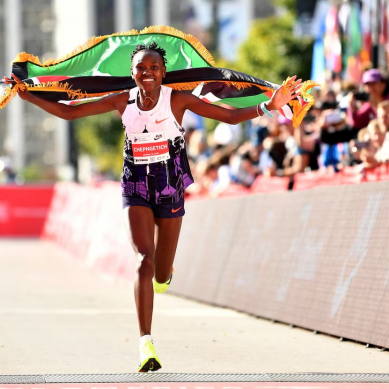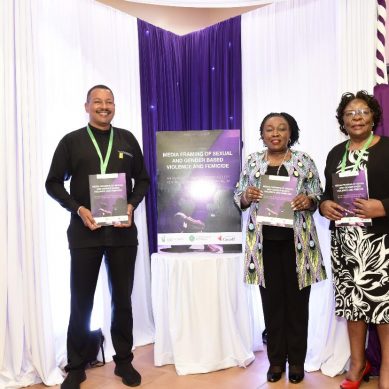
Positive peace and security can be described as the attitudes, institutions and structures that create and sustain peaceful societies.
The eight pillars of positive peace and security, or eight-part taxonomy of the factors associated with peaceful societies, may be stated as follows:
- Well-functioning government
- Sound business environment.
- Equitable distribution of resources
- Acceptance of the rights of others
- Good relations with neighbours
- Free flow of information.
- High levels of human capital.
- Low levels of corruption (Positive Peace Report, 2022).
It is important to look at how Uganda has performed on each the pillars of positive peace and security. However, I will not do this in this particular article.Suffice to state that with poor performance on the eight pillars of positive peace, it is wishful thinking to hold that peace and security can be sustainably enjoyed by a society such as that of Uganda well in future. It means such society is a tragedy waiting to happen. It will be totally ungovernable; full of chaos and violence!
Ever since the onset of the 21st century Uganda has been under the leadership and governance of President Tibuhaburwa Museveni and his politico-military outfit called National Resistance Movement alias Uganda People’s Defence Forces, which constitutionally replaced National Resistance Movement alias National Resistance Army.
During the promulgation of the 1995 constitution by President Tibuhaburwa Museveni on October 8, 1995, a day before the commemoration of Uganda’s Independence Day, the president wished Uganda Peoples Defence Forces had constitutionally remained National Resistance Army.
Entrenched articles in the constitution such as the article that puts all power and authority in the hands of the president, more or less translocated the power and authority of Tibuhaburwa Museveni over NRM and the NRA during the Luwero Bush War. The president is granted total immunity against the law. It is practically This is because all the power and organs of the state are entrusted and subservient to the Presidents (Mutesi Jabu, 2024). Edris Kiggundu (2017) recorded that by 2017 65 Articles of the Constitution had been amended.
Virtually all of the 65 articles were amended to shield the president from the people and enhance his powers to do anything he wished, including using the people to achieve his political goals in Uganda. Throughout the constitution amendments the ultimate aim has been to effectively control the movements and actions of Ugandans and build a kind of closed society where all thinking, reasoning and choices of peace and war emanate from the president.
Accordingly, the intellectual development and institutionalism have been stunted in the complex 21st century. When elections are held the aim is not to give the people the freedom to choose between the president and someone else but to create the impression that the democratic process in Uganda is alive and kicking. Where it is perceived that the people are determined to reject the president and his party, the military, police and other paramilitary groups are used to create adequate fear to scare people into not voting or to vote the president or his party. Many times, pre-ticking of ballot papers and political buying are used as strategies to preserve the status quo.
Currently, the president is using the representatives of the people belonging to the NRM Caucus in parliament to amend the UPDF Act to ensure that the military tribunal is constitutionally converted into a military court, which will be directly under his powers so that it can legally try civilians accused by the state of terrorism and treason.
Treason frequently involves politicians opposing the president’s choices, actions and stances or using elections to remove him from power. However, it should be remembered that long ago the president declared, during a presidential campaign in Seeta, Mukono, that a mere piece of paper cannot remove him from power; that he is like a quarter pin of a bicycle, which can only be fixed by hitting and removed by hitting. This has been demonstrated in every election or by-election since 1996.
Whatever the case, one clarion message to Ugandans and the world is that President Tibuhaburwa Museveni and his party are the only ones that are almost God-given to build and preserve peace and security in Uganda sustainably. Despite this clarion message, however, Uganda’s peace and security remains tortuous.
The phrase ‘tortuous peace and security’ suggests a complex and difficult path towards achieving stability and safety, often involving challenges, setbacks and a lack of easy solutions. It implies that the journey towards peace and security is not straightforward, but rather fraught with obstacles and requiring sustained effort. Many times, the state itself undermines whatever little peace and security have been built. We have just witnessed this during the North Kawempe Constituency by-election in a show of military strength against innocent citizens seeking to exercise their right to choose and media workers exercising their role as information and communication knowledge transmitters. Such State behaviour can harden the attitude of the mainly young voters and journalists against it and further undermine military peace and security in the country.
Therefore, peace and security based on the basis of a strong man or all-powerful leader and military strength alone is not sustainable in the long-term. There is need to broaden the concept of peace and security to include other types of peace and security, which are not factored in the equation of peace and security in Uganda currently. Virtually all the peace and security budget focuses on the military, police and paramilitary groups.
If we broaden the concept of peace and security in Uganda, then we must begin planning for and allocating suitable budgets to the following types of peace and security:
- Food-based peace and security
- Climate-based peace and security
- Mental and psychological peace and security
- Ecological peace and security
- Environmental peace and security
- Health-based peace and security
- Social peace and security
- Political peace and security
- Economic peace and security
- Democracy-based peace and security
- Negotiated peace and security
- Human rights-based peace and security
- Culturally-based peace and security
- Equity-based peace and security
Let me explain what some of these types of peace and security are but not in the order above.
Political peace and security
In the context of political peace and security, the focus is on creating stable and just societies free from violence and conflict, encompassing both the absence of war and the promotion of positive peace, human security, and sustainable development.
Economic peace and security
Economic security and peace are intertwined; economic development and stability are crucial for fostering peace, while a lack of security and persistent conflict can undermine economic progress.
Culturally-based peace and security
Culturally-based peace and security recognises that culture plays a vital role in shaping values, attitudes, and behaviours that contribute to peace or conflict and therefore, peacebuilding efforts must consider cultural contexts and traditions.
Human rights-based peace and security
A human rights-based approach to peace and security emphasizes that promoting and protecting human rights is crucial for building resilient, peaceful, and just societies, as human rights violations can be a cause, trigger, and consequence of violence and conflict.
Social peace and security
Social peace and security encompass the absence of violence and conflict, promoting a society where individuals feel safe and secure, with access to basic needs and opportunities, and where disputes are resolved peacefully.
Health-based peace and security
Health and peace are interconnected, with health security being a fundamental pillar of human security, and the lack of access to healthcare fuelling conflicts and grievances. Health initiatives can serve as a neutral starting point for bringing together rival parties and fostering trust, while also addressing the root causes of conflict.
Ecological peace and security
Ecological peace and security recognizes the interconnectedness of environmental health and human security, emphasizing that a healthy environment is crucial for peace and stability, and that environmental degradation can exacerbate conflicts and vulnerabilities.
Climate-based peace and security
Climate-based peace and security recognizes that climate change impacts, such as resource scarcity and displacement, can exacerbate existing conflicts and create new security risks, requiring a shift in peacebuilding strategies to address these challenges.
Food-based peace and security
Food-based peace and security recognises the vital link between food security, conflict and peace, emphasising that addressing hunger and food insecurity can prevent conflict and build sustainable peace.
If we priotise all these and the other types of peace and security in the list above, we shall free time, energy and money from militarisation and begin to seek and build real peace and security, which is multidimensional and has been evading us for decades. The more we devote time, energy and money to building just military peace and security, the more our stability will remain unstable in the medium and long-term.
Our sociopolitical environment, sociocultural environment and ecological-environment will remain prone to chaos and violence, thereby denying present and future generations of Ugandans meaningful and effective peace and security for development, transformation and progress. Without genuine peace and security in its multidimensionality, we cannot claim that we were liberated from colonialism on 9th October 1962 or from the past post-independence political regimes by the NRM/A on January 25,1986.
For God and my country
- A Tell report / By Oweyegha-Afunaduula / Environmental Historian and Conservationist Centre for Critical Thinking and Alternative Analysis (CCTAA), Seeta, Mukono, Uganda.
About the Centre for Critical Thinking and Alternative Analysis (CCTAA)
The CCTAA was innovated by Hyuha Mukwanason, Oweyegha-Afunaduula and Mahir Balunywa in 2019 to the rising decline in the capacity of graduates in Uganda and beyond to engage in critical thinking and reason coherently besides excellence in academics and academic production. The three scholars were convinced that after academic achievement the world outside the ivory tower needed graduates that can think critically and reason coherently towards making society and the environment better for human gratification. They reasoned between themselves and reached the conclusion that disciplinary education did not only narrow the thinking and reasoning of those exposed to it but restricted the opportunity to excel in critical thinking and reasoning, which are the ultimate aim of education. They were dismayed by the truism that the products of disciplinary education find it difficult to tick outside the boundaries of their disciplines; that when they provide solutions to problems that do not recognise the artificial boundaries between knowledges, their solutions become the new problems. They decided that the answer was a new and different medium of learning and innovating, which they characterised as “The Centre for Critical Thinking and Alternative Analysis” (CCTAA).
Further reading
d’Agostino, Giorgio and Dunne, J. Paul and Pieroni, Luca (2024). Food and Peace? Exploring the Link between Conflict and Food Insecurity in Africa. MPRA, October 1 2024 https://mpra.ub.uni-muenchen.de/122247/1/MPRA_paper_122247.pdf Visited on 13 March 2025 at 12:04 pm EAT
de Rivera, Joseph and Darıo Paez (2007). Emotional Climate, Human Security, and Cultures of Peace. Journal of Social Issues, Vol. 63, No. 2, 2007, pp. 233—253. https://www.ehu.eus/documents/1463215/1504269/de_Rivera_&_P%E2%80%A0ez_(2007).pdf Visited on 13 March 2025 at 12:18 pm EAT
Edris Kiggundu (2017). Analysis: 65 Articles of Constitution Amended since 1995. NilePost, 21 November 2021. https://nilepost.co.ug/investigations/4152/analysis-65-articles-of-constitution-amended-since-1996 Visited on 13 March 2025 at 10:37 am EAT
Florian Krampe, Farah Hegazi, Stacy D. VanDerveer (2021). Sustaining peace through better resource governance: Three potential mechanisms for environmental peacebuilding. World Development, Volume 144, August 2021, https://www.sciencedirect.com/science/article/pii/S0305750X21001200 Visited on 13 March 2025 at 12:25 pm EAT.
Institute of Economics and Peace (2022). Positive Peace Report 2022: Analysing the factors that build, predict and sustain peace. IEP, Sydney, January 2022. https://www.visionofhumanity.org/wp-content/uploads/2022/01/PPR-2022-web.pdf Visited on 14 March 2025 at 10:45 am EAT
International Conference for Peace, Security, Democracy and Development in the Great Lakes Region (2004). DRAFT 2 DAR ES-SALAAM DECLARATION ON PEACE, SECURITY, DEMOCRACY AND DEVELOPMENT IN THE GREAT LAKES REGION, 19-20 November, 2004. https://ungreatlakes.unmissions.org/sites/default/files/icglr_dar_es_salaam_declaration_on_peace_security_democracy_and_development_in_glr.pdf Visited on 14 March 2025 at 11:33 am EAT.
Kheira Tarif, Katongo Seyuba, Anne Funnemark, Dr Elisabeth L. Rosvold, Asha Ali, Dr Kyungmee Kim, Cedric de Coning and Dr Florian Krampe (2023). Climate, Peace and Security Research Paper: Insights on Climate, Peace and Security. SIPRI, Stockholm, December 2023. https://www.sipri.org/publications/2023/partner-publications/climate-peace-and-security-research-paper-insights-climate-peace-and-security Visited on 13 March 2025 at 12:11 am EAT.
Maria Andrea Nardi, Maria Andrea Nardi, Torsten Krause and Fariborz Zelli (2024). Diverse understandings and values of nature at the peace–environment nexus: a critical analysis and policy implications towards decolonial peace. Ecology and Society, Volume 29, Issue 4 Dec 2024. https://ecologyandsociety.org/vol29/iss4/ Visited on 13 March 2025 at 12:39 pm EAT.
Mutesi Jabu (2024). Critical Analysis of the Entrenched Provisions of the 1995 Constitution of the Republic of Uganda. ResearchGate, June 2024 3(3): 29-35. https://www.researchgate.net/publication/381378699_Critical_Analysis_of_the_Entrenched_Provisions_of_the_1995_Constitution_of_the_Republic_of_Uganda Visited on 13 March 2025 at 10:24 am EAT.
PSC (2024). Health security and the promotion of peace and security in Africa. PSC, 7 February 2024. https://amaniafrica-et.org/health-security-and-the-promotion-of-peace-and-security-in-africa/ Visited on 13 March 205 at 12:45 pm EAT
Tobias Ide, McKenzie F. Johnson, Jon Barnett, Florian Krampe, Philippe Le Billon, Lucile Maertens, Nina von Uexkull & Irene Vélez-Torres (2023). The Future of Environmental Peace and Conflict Research, Environmental Politics, 2 January 2023. https://serval.unil.ch/resource/serval:BIB_83495BD20474.P001/REF.pdf Visited on 13 March 2025 at 12:31 pm EAT.
UNESCO (2021). African cultures for peace and security. UNESCO, 22 June 2021 https://www.unesco.org/en/articles/african-cultures-peace-and-security Visited on 13 March 2025 at 12:50 pm EAT.
VISION OF HUMANITY (2025). The Eight Pillars of Positive Peace. IEP, 2025. https://www.visionofhumanity.org/the-eight-pillars-of-positive-peace/ Visited on 14 March 2025 at 10:51 am EAT.







